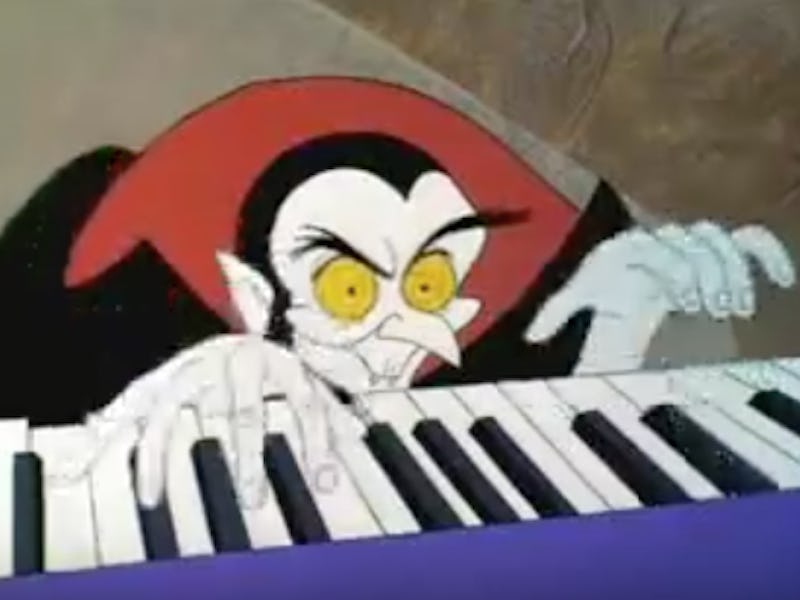The spooky season is comprised of a few time-honored traditions: jack-o-lanterns, people debating the merits of pumpkin spice lattes, and most importantly, “The Monster Mash.” Though the self-described “graveyard smash” was first released in 1962, the spooktacular tune has charmed kids and adults for decades. Now, a neuroscientist and a music theorist tell Inverse that from a scientific perspective, “The Monster Mash” is a certified banger and always will be.
While over 360 covers of “The Monster Mash” currently exist, data from Spotify confirms the Bobby “Boris” Pickett original is the “most seasonal song” on the streaming service, meaning it receives the biggest seasonal spike in listens of any song in the Spotify database; on Halloween 2015, the world collectively listened to 43,253 hours of “The Monster Mash” on the site. This is probably because while there’s no shortage of Christmas songs, there is only one Halloween song that is simultaneously a) a monster mash and b) a graveyard smash.
But why do people feel so passionately about a spooky little song from the ‘60s? According to Ethan Hein, a doctoral fellow in music education at NYU, part of “The Monster Mash’s” legacy could be due to a limited pool of Halloween jams, which is similar to what the Spotify data suggests.
“Maybe we like it because we don’t have a lot of good Halloween songs,” Hein tells Inverse. “It’s like, “Thriller,” “Werewolf Bar Mitzvah,” and that’s about it.”
Part of what makes “The Monster Mash” stand out, though, is that it’s the precise opposite of what you’d expect from a Halloween song. While there are elements of “horror” in the song — e.g. a ghoulish narrator’s voice, allusions to Frankenstein and other monsters — the structure of the song is quite playful.
“The chord progression is I-vi-ii-V, the 1950s “ice cream” progression”, Hein says. “It’s literally the least spooky chord progression imaginable.” Apparently, many ‘50s classics including “Duke of Earl” and “Earth Angel” also utilize this structure, but none of them qualify as graveyard smashes.
In a way, “The Monster Mash” subverts the expectations placed on it; it rejects the idea that a “good” Halloween song should be a chilling organ solo rather than an inviting, undead extravaganza. It’s more “Casper the Friendly Ghost” and less “Dracula.”
“If you told me to go write a Halloween song, I would have gone for a standard spooky vibe: minor key, flat fifths, lots of diminished chords,” Hein says. “I would have used pipe organ, going for a Bach Toccatta and Fugue in D minor feeling. I wouldn’t have thought of the ice cream progression in a million years.”
The fact that “The Monster Mash” has been around so long means it probably evokes positive memories for those who grew up listening to it. These fans play the song for their children who then presumably do the same, creating new generations of Monster Mashers.
“Something that I have studied a bit in my research is the associations between music and autobiographical memories — the thing that happens when you hear a song and it takes you back to a previous memory of a time in your life,” Amy Belfi, a neuroscientist based at NYU, tells Inverse. “I think this might be one reason why people enjoy ‘The Monster Mash.’ I know at least for me, when I hear that song it reminds me of being a little kid around Halloween time. I’m guessing a lot of people have similar associations with this song, and Halloween is so fun that the memories associated with it are likely to be positive ones.”
Who knows why anyone truly loves “The Monster Mash,” or anything for that matter. All that counts is that it means something to you, and that you play it nonstop for 31 days every October.
“What’s not to love? It’s like, let’s take ‘Duke of Earl,’ do a goofy Vincent Price narration about Halloween monsters on top,” Hein says. “It makes no sense, but sense-making is overrated in pop music.
